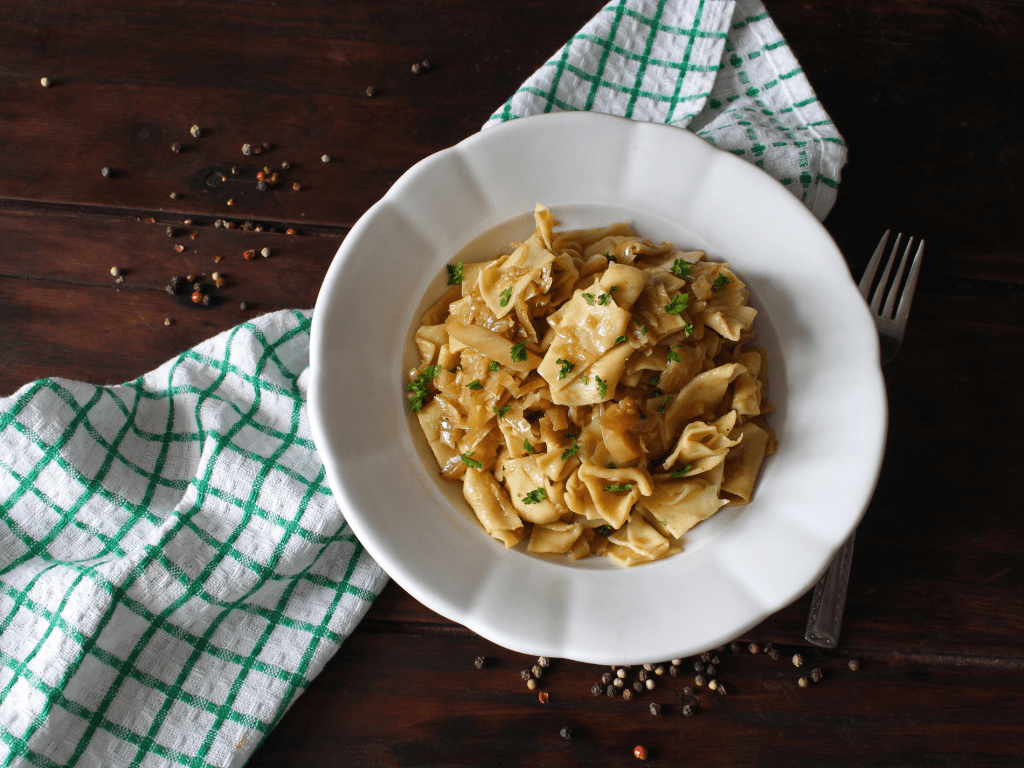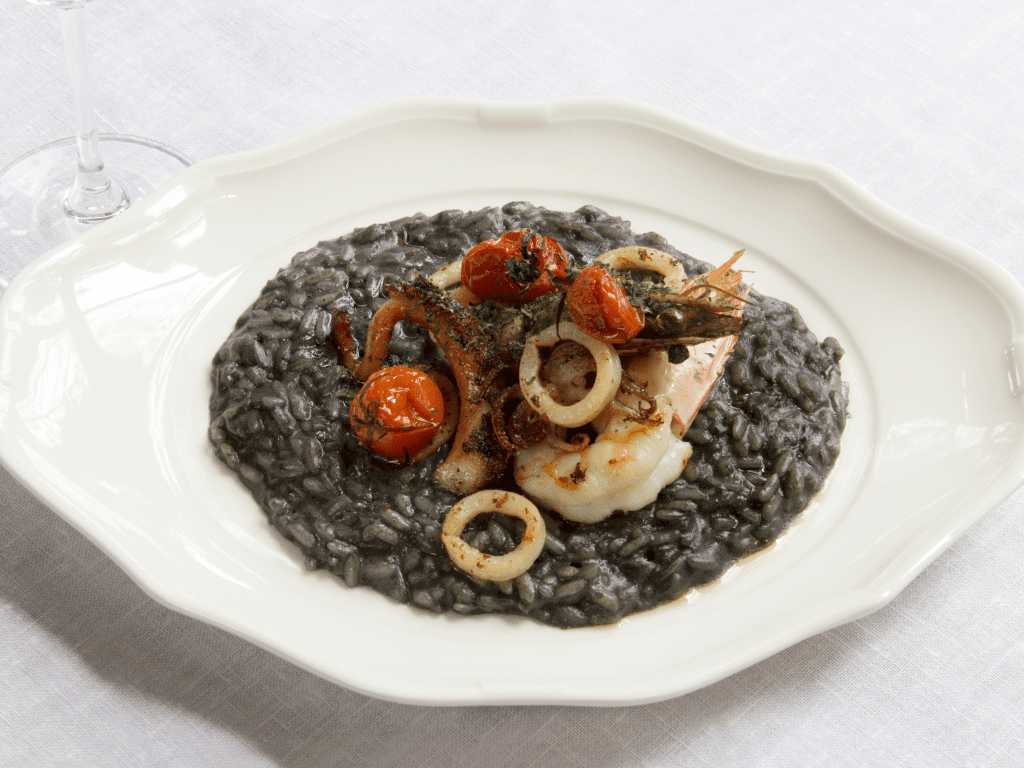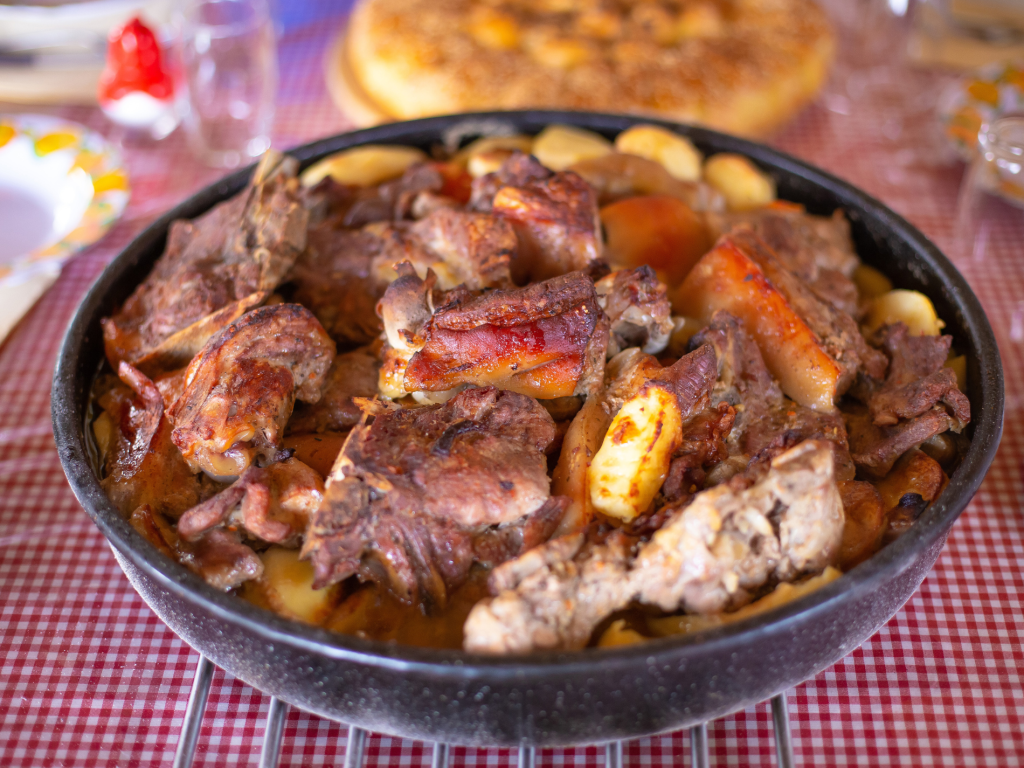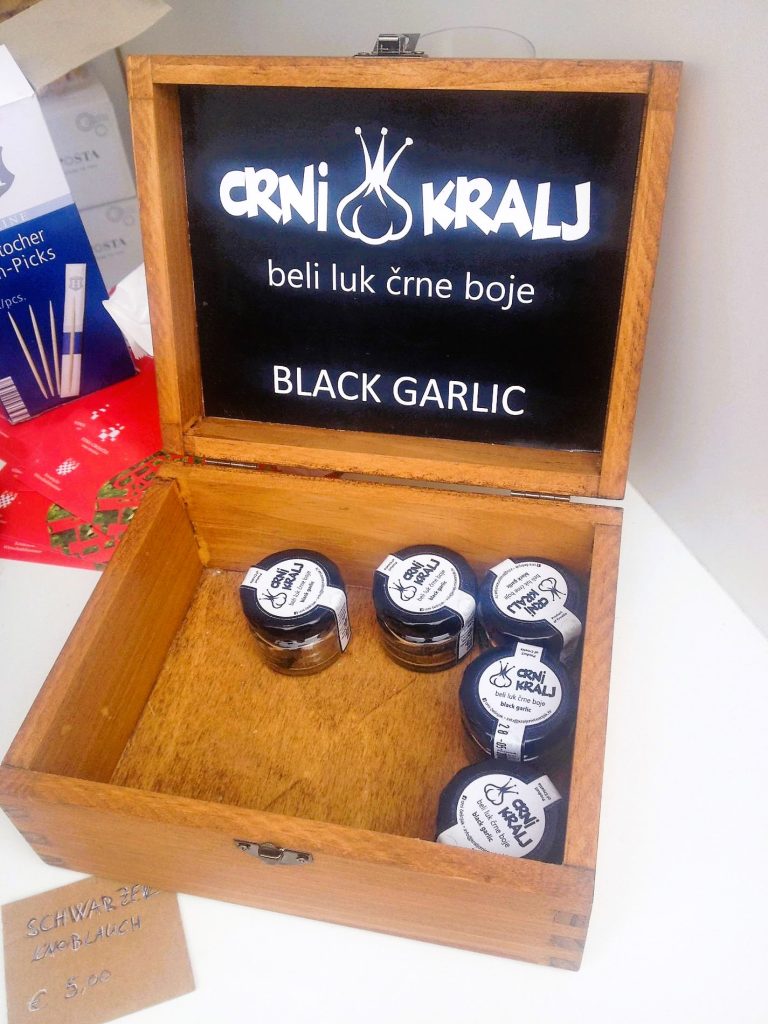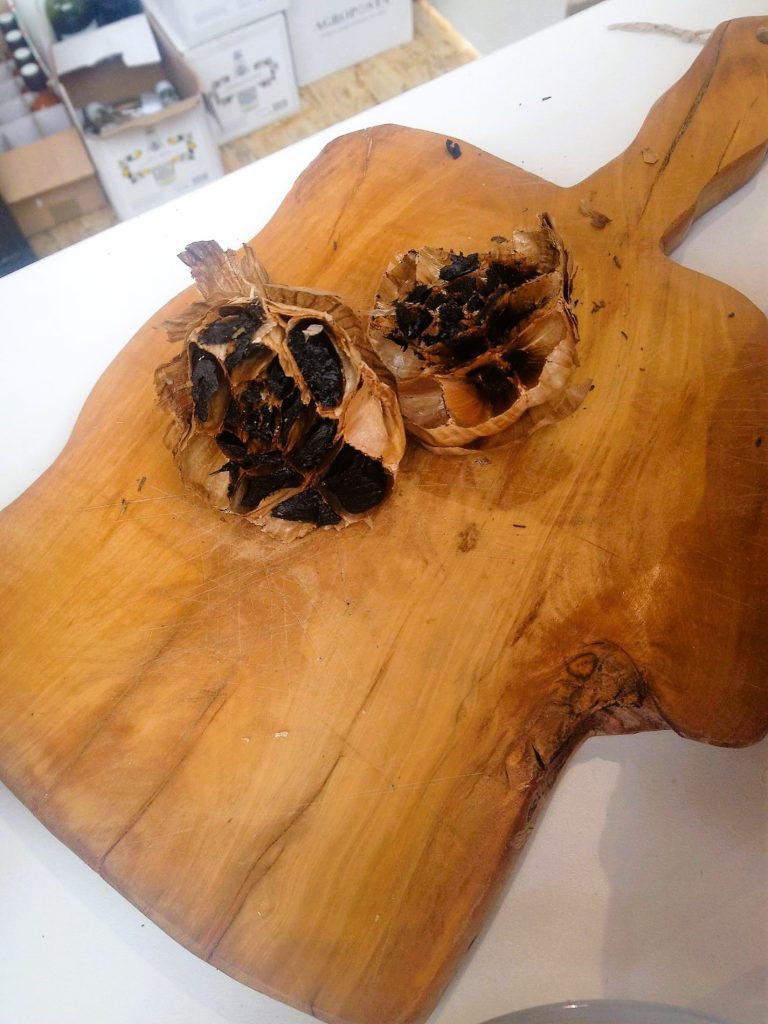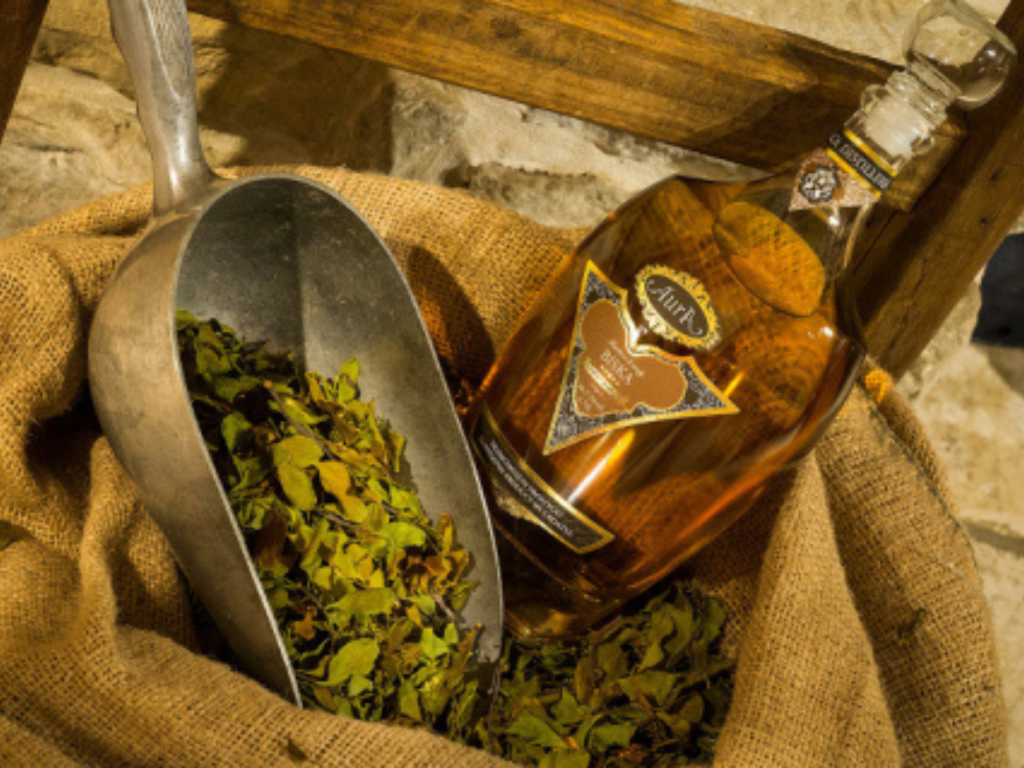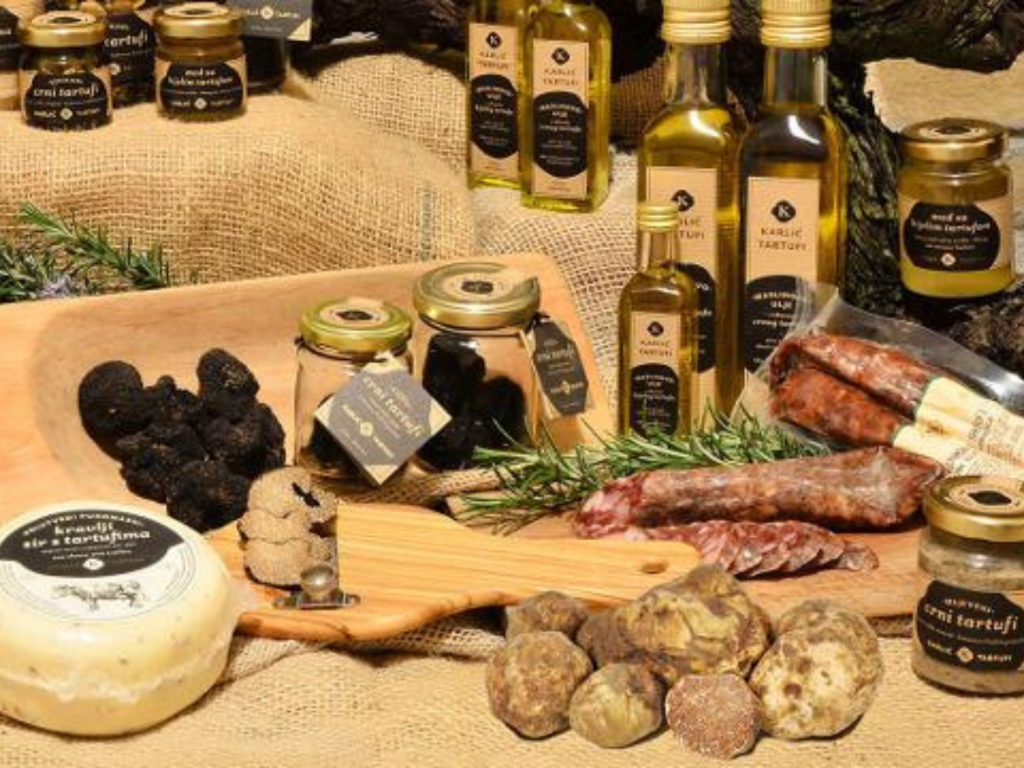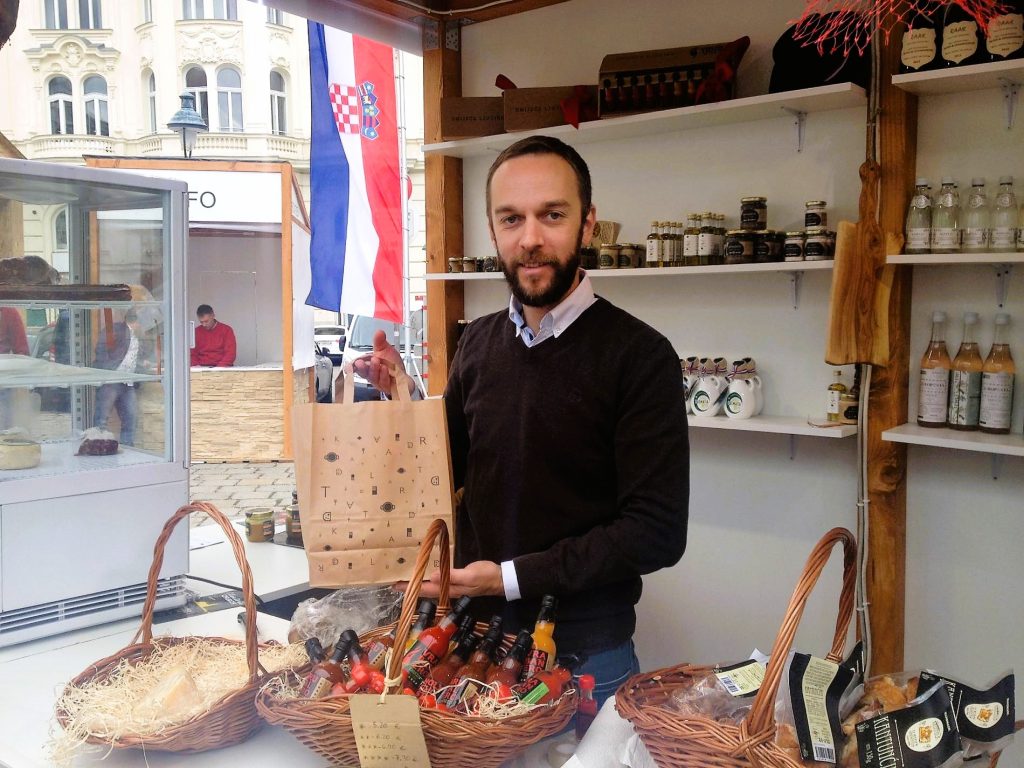Croatian cuisine embodies culinary diversity.
Croatian cuisine is a rich and diverse blend of flavors, ingredients and culinary traditions lovingly passed down from grandmother to mother and mother to daughter. The cuisine is a unique fusion of flavors that is both delicious and deeply rooted in the country’s history and culture. On Croatia’s Adriatic coast and its many islands, dishes are blended with the flavors of the Mediterranean, Central Europe and the Ottoman Empire. The result is a unique, lively and heart-warming melody of flavors.
One of the main characteristics of Croatian cooking is the use of fresh, locally sourced ingredients. Croatian dishes call for juicy, red, sun-ripened tomatoes bursting with flavor, fragrant hand-picked basil, succulent seafood fished fresh from the Adriatic Sea, and earthy black truffles from the hinterland. A typical feature of the Croatian cuisine is the use of simple, high-quality ingredients, often grown or caught locally. Small and rural gardens abound, and shopping is usually done at open farmers’ markets rather than large supermarkets.
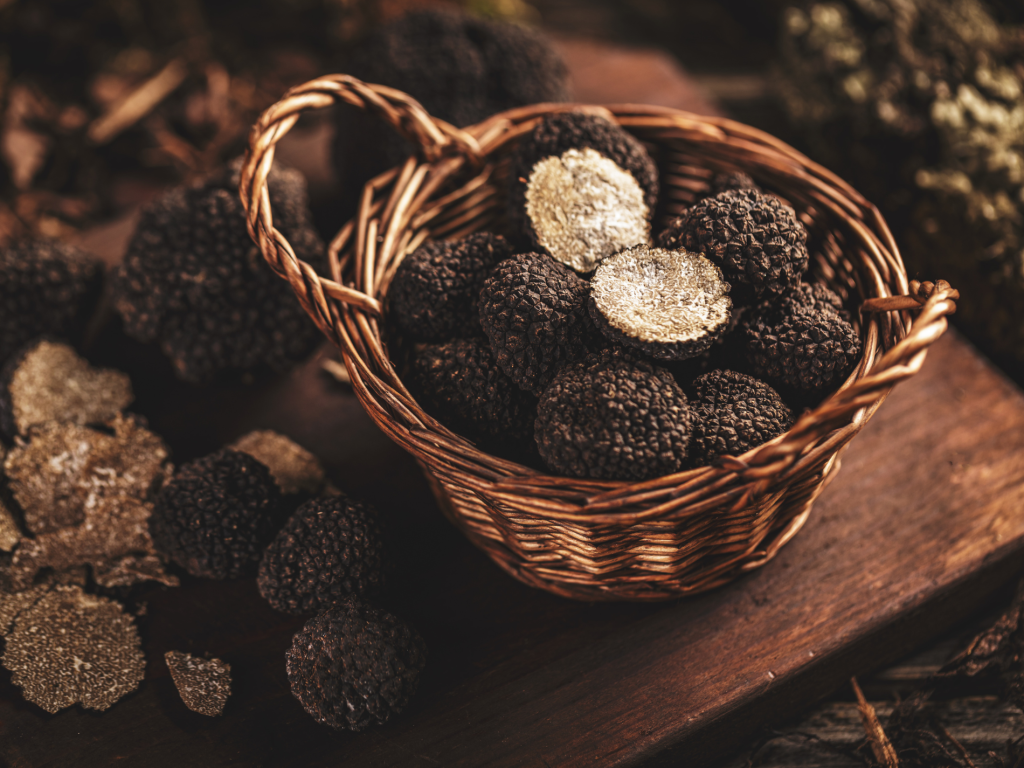
In addition to its use of fresh ingredients, Croatian cuisine is known for its regional variations, reflecting the country’s diverse cultural and historical influences. For example, the Dalmatian coast, with its long fishing history, is known for its seafood dishes, while the northern regions of Croatia, such as Istria, are known for using truffles and olive oil.
Croatian dishes are more than mere meals. They are a vital part of the country’s cultural heritage. Whether professional or domestic, Croatian chefs are well-versed in the different traditional cooking methods of the region, such as grilling, baking, and slow-simmering. They carefully choose specific techniques to create dishes that are not only flavorful and tender but also healthy and sustainable and reflect a rich and diverse heritage with many cultural influences, including Venetian.
The Legacy of Venice in Croatia: Is Croatian food similar to Italian?
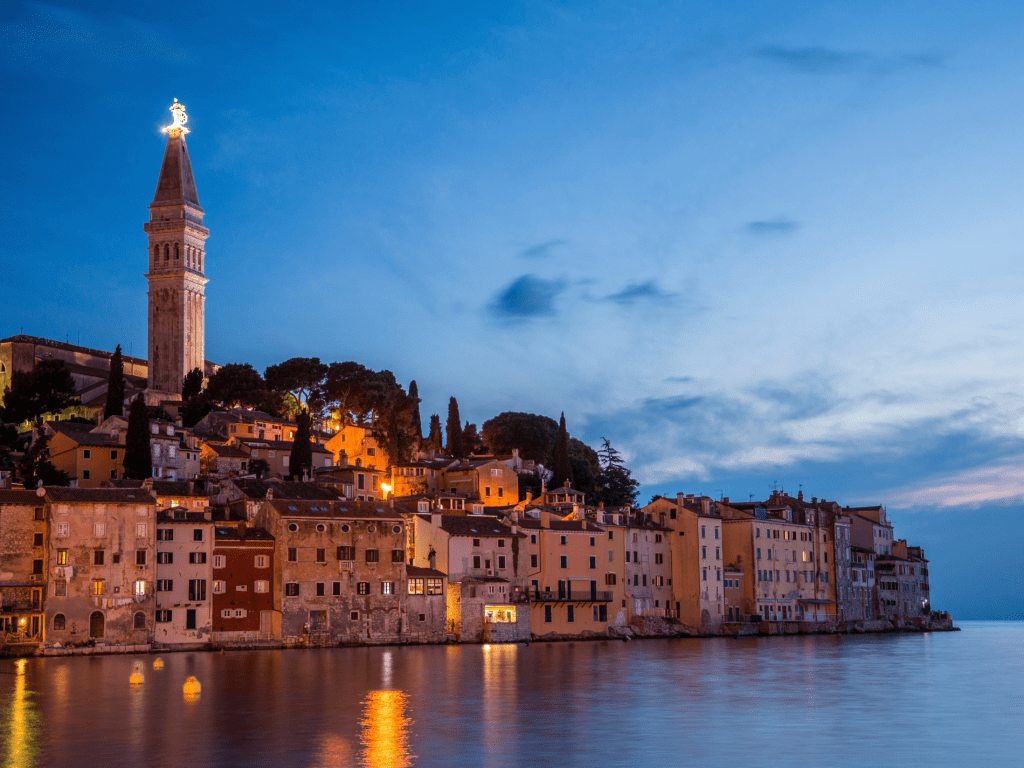 Stroll through the cobblestone streets of Rovinj or other towns along the Istrian coast, and it is impossible not to note the influence of La Serenissima. The Marcus Lion, a symbol of the once mighty Venetian Republic’s power and pride, is omnipresent. You can see the hand of Venice sculpted into Croatian architecture and cooked into the rich flavors of the regional cuisine.
Stroll through the cobblestone streets of Rovinj or other towns along the Istrian coast, and it is impossible not to note the influence of La Serenissima. The Marcus Lion, a symbol of the once mighty Venetian Republic’s power and pride, is omnipresent. You can see the hand of Venice sculpted into Croatian architecture and cooked into the rich flavors of the regional cuisine.
Venice and Croatia share a rich and complex history of interaction that has had a lasting impact on the region’s cultural, political, and economic development. The Venetian Republic, its control of Croatia’s Dalmatian coast, and its role in trade and commerce have left a lasting legacy in the cities along the Adriatic coast.
In the 14th and 15th centuries, Venice established a powerful maritime republic and gained control of Croatia’s Dalmatian coast, including the cities of Zadar, Split, and Dubrovnik. Venice significantly impacted these cities’ cultural, economic, and architectural development during this time. The city-state of Venice was known for its wealth and prosperity, which was reflected in the opulent architecture, art, and culture of the cities under its control.
Venice played a significant role in the trade and commerce between the eastern and western Mediterranean, and the ports of Dalmatia were an essential stop on the trade routes between Venice and the Ottoman Empire. This trade brought wealth and prosperity to Dalmatia’s cities and helped shape their unique blend of Italian and Slavic cultural influences. The towns along the Dalmatian coast are still renowned for their rich cultural heritage, and visitors today can still see the impact of Venice on the architecture, art, and cuisine of these cities.
Similarities and differences between Venetian and Croatian dishes
Both Croatian and Venetian cuisine are steeped in history and influenced by the regions they come from. However, despite some similarities, there are also some significant differences.
Similarities:
- Use of seafood: Venetians and Croatians heavily feature seafood in their dishes. This is due to the proximity of both regions to the Adriatic Sea. Expect to find dishes such as grilled squid and mussels in both cuisines.
- Use of olive oil: A staple ingredient in Croatian and Venetian cuisines, olive oil is widely used for cooking and as a finishing oil for dishes.
- Pasta: Both cuisines also feature pasta dishes, like the Croatian “fuzi” and the Venetian “bigoli.”
Differences:
- Use of spices: Venetian cuisine tends to be lighter and more subtle in its use of spices, whereas Croatian cuisine uses a broader range of herbs and spices, including garlic, paprika, and black pepper, to add more depth of flavor to their dishes.
- Use of meat: Venetian cuisine makes greater use of meat, with dishes such as “cicchetti” (small plates of cured meats, cheeses, and other snacks) being a staple of Venetian cuisine. On the other hand, Croatian cuisine tends to be more focused on seafood and vegetables.
- Regional ingredients: Both cuisines use local ingredients, but the ingredients used in Croatian cuisine are more specific to the region. For example, dishes in the Istria region will use truffles, while recipes in Dalmatia will feature figs and olives.
While Croatian and Venetian cuisines share some similarities, there are also apparent differences, reflecting each region’s unique history and geography. Both cuisines offer delicious and distinctive dishes that are well worth exploring.
Croatia is known for its wine culture, distilling traditions, olive oil & cuisine

What would a Croatian meal be without a glass or two of Croatian wine?
Ask Croatian poet Tin Ujevic, and he will answer colorless! Ujevic insists that wine and inspiration are one and the same. Words, spirit, and poetry are products of wine. They are inexplicably intertwined.
Not being able to taste wine is the same as not seeing colors.
-Croatian poet Tin Ujevic.
Croatia has a long history of winemaking and is home to many world-class wineries that produce a wide range of red, white, and sparkling wines. They are renowned for both their high quality and unique flavors. If you ask any Croatian, they will tell you without hesitating that the best wines are grown on Croatian soil.
Some of the most famous Croatian wines include:
- Plavac Mali – This is a red wine made from the Plavac Mali grape, a local variety found in the Dalmatian region of Croatia. Plavac Mali is known for its full-bodied and fruity flavor, with black cherry and plum notes.
- Dingač – This red wine is considered one of Croatia’s finest and most prestigious wines. It is made from the Dingač grape, found only in the Dingač region of the Pelješac peninsula. The wine is known for its rich, intense flavor and deep ruby color.
- Malvazija Istarska – This is a white wine made from the Malvazija Istarska grape, a local variety found in the Istria region of Croatia. The wine is known for its crisp and fruity flavor, with notes of lemon and apple.
- Pošip – This white wine grown along the coast of Croatia is considered one of the country’s most distinctive and high-quality wines. The wine is known for its fresh and crisp flavor, with notes of citrus and minerality.
- Graševina – This white wine is widely grown in Croatia and is considered one of the country’s most famous wines. The wine is known for its fresh and fruity flavor, with green apple and pear notes.
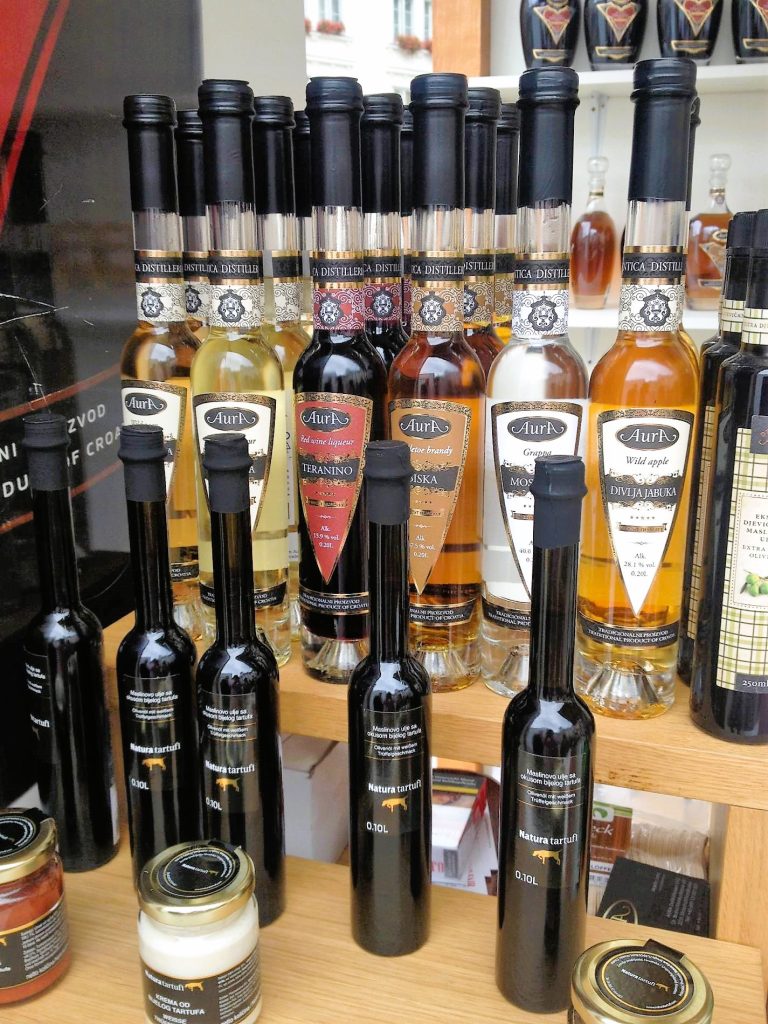
Croatian spirits are steeped in tradition and mystery.
Many types of spirits are produced across the country.
Here are some of the most notable Croatian spirits to try:
- Pelinkovac: Pelinkovac is a traditional herbal liqueur that originated in Croatia. It is made from a blend of aromatic herbs, including wormwood, which gives the liqueur its distinctive bitter taste. Other herbs that are commonly used in the production of Pelinkovac include anise, fennel, and mint.
- Rakija: Rakija is a type of fruit brandy that is popular throughout Croatia and the surrounding regions. It is typically made by distilling fermented fruit, such as plums, grapes, or apricots. The alcohol content can range from 40% to 65%, and it is often served as an aperitif or a digestif.
- Maraschino: Maraschino is a liqueur that is made from Marasca cherries, which are grown in the Dalmatia region of Croatia. The cherries are fermented and then distilled, and the resulting spirit is blended with a sweet syrup and aged in oak barrels. Maraschino has a sweet, fruity flavor and is often used in cocktails and desserts.
- Travarica: Travarica is a type of herbal brandy that is popular in Croatia. It is made by distilling a blend of herbs, which can include everything from mint and chamomile to rosemary, sage, olive, and even mistletoe. Travarica is often consumed as an aperitif or a digestif and is believed to have medicinal properties.
- Medica: Medica is a type of honey brandy that is popular in Croatia. It is made by fermenting honey and water, and then distilling the resulting mead. The alcohol content can range from 25% to 40%, and the flavor is sweet and floral. Medica is often consumed as a dessert liqueur and is sometimes mixed with hot water to make a soothing winter beverage.
Croatia is Home to Award-Winning Olive Oils
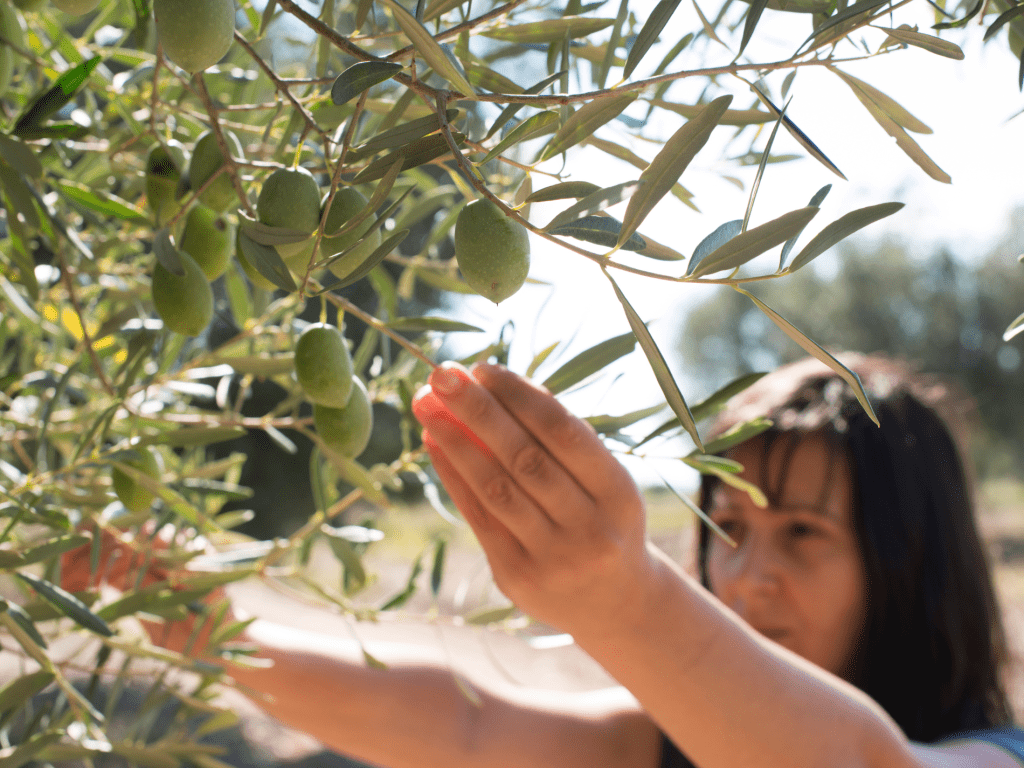
Croatian olive oil comes from olive trees grown throughout the country, with the largest concentrations found in the regions of Istria and Dalmatia. These regions are known for their favorable climate and fertile soil, which provide the ideal conditions for growing high-quality olives.
Istria, located in the northwest of the country, is known for producing some of the finest olive oils in Croatia, with a long tradition of olive growing that dates back to Roman times. The region is characterized by rolling hills and mild weather and is home to many small, family-run olive groves.
Dalmatia, located in the south of the country, is another critical region for olive oil production in Croatia. The area is known for its diverse landscapes, ranging from the rugged coastline to the fertile plains of the hinterland. The olive groves in Dalmatia are often located near the sea, taking advantage of the mild climate and fertile soil.
Croatian olive oil is prized for its high quality and rich flavor, with a growing reputation as one of the finest olive oils in the world. The country’s favorable climate, fertile soil, and rich cultural traditions make Croatian olive oil an authentic taste of the Mediterranean.
4 Popular Croatian dishes
1. Pasticada
Pasticada is a traditional dish from the Dalmatian region of Croatia. It is a slow-cooked stew made from beef and various vegetables and herbs. It is typically seasoned with wine, garlic, and spices and is considered one of the most iconic dishes of Croatian cuisine.
This is usually a celebratory dish reserved for special occasions such as weddings or holidays. The long and slow cooking process symbolizes the care and patience that goes into making the dish, and the rich and hearty flavors reflect the warmth and hospitality of the region.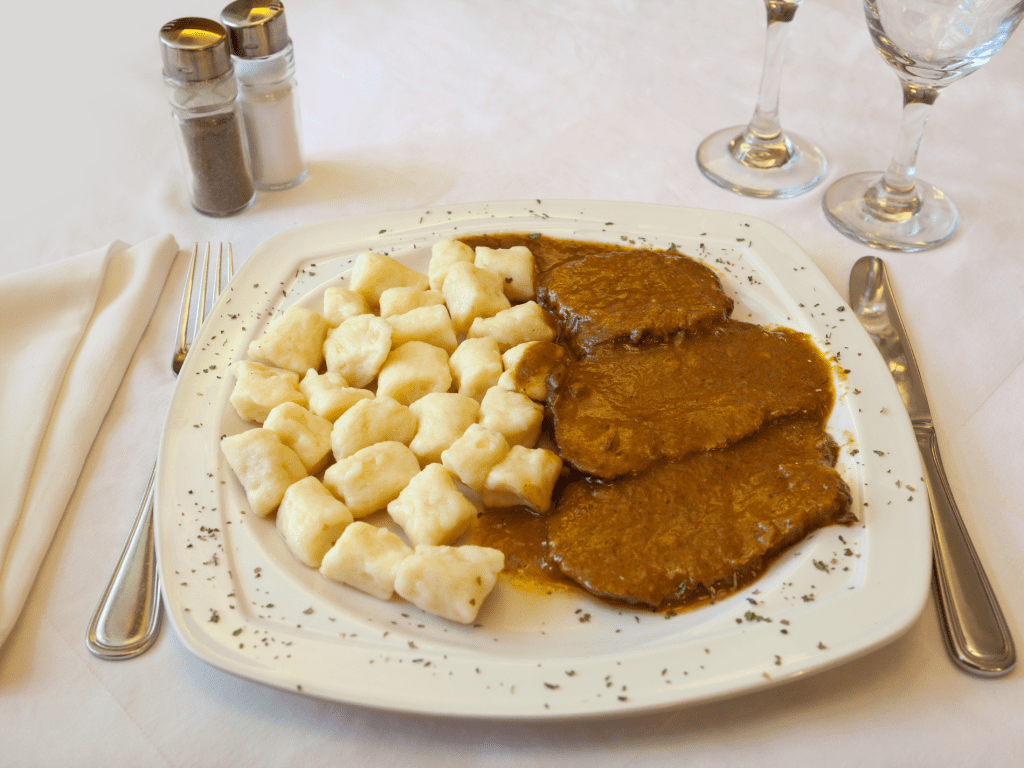
2. Istrian Fuži
Another popular dish is Istrian fuži, a pasta similar to gnocchi and typically served with a sauce made from cheese, bacon, and sometimes truffles. Fužii is a short, thick, hand-rolled pasta similar in shape to penne but with a slightly curved edge. It is traditionally served with a hearty meat or vegetable sauce and is a staple dish in Istrian cuisine.
The traditional sauce for fuži is made from truffles, mushrooms, and prosciutto, which are all abundant in the Istrian region. The sauce is often made with a blend of cream and red wine, which creates a rich and flavorful base for the dish.
Fuži is typically made by hand, using a rolling pin or a specialized tool to shape the pasta. The pasta is then boiled for a few minutes until it is al dente and mixed with the sauce. The dish is frequently garnished with grated cheese, such as parmesan or pecorino, to add an extra layer of flavor.
3. Crni rižot
Crni rižot, a type of risotto made with cuttlefish and ink, is also a must-try for those interested in exploring the diverse flavors of Croatian cuisine. It is similar to the Venetian “risotto nero” or black risotto and is readily available in the Dalmatian region of Croatia. It is a creamy rice dish characterized by its deep, dark color from squid ink.
The dish is made by first sautéing onions, garlic, and diced squid in olive oil and then adding arborio rice and a mixture of white wine and chicken or fish broth. The squid ink is added, giving the dish its signature dark color and rich, umami flavor. The risotto is then finished with grated Parmesan cheese, which adds a salty and nutty contrast to the dish.
Crni rižot is a popular dish in Croatian cuisine and is often served as a main course, accompanied by a simple green salad or crusty bread. The combination of creamy rice, tender squid, and rich flavors make this dish an authentic taste of the Dalmatian coast.
4. Peka
For those who enjoy grilled meats, peka is a traditional cooking method from Croatia’s Dalmatian region. It involves cooking meat, vegetables, potatoes, and sometimes seafood as in the dalmatian cuisine over hot coals. The ingredients are cooked under a dome-shaped lid made of cast iron or clay, called a peka. The slow-cooking method results in a flavorful and tender meal that is perfect for any occasion.
The food is placed in the peka, with some spices and olive oil, and then covered with the lid. The peka is then placed in a wood-fired oven or stove top, and the food is slowly cooked for several hours. This cooking method locks in the ingredients’ flavors, producing a tender and juicy dish.
The most common dish cooked using the peka method is peka meat, which is typically made from veal, pork, or lamb. The meat is marinated in spices and olive oil and then slow-cooked with potatoes and vegetables such as bell peppers, onions, and garlic. The finished dish is juicy and flavorful and has a melt-in-your-mouth texture.
Peka is a popular dish in Croatia and is often served on special occasions, such as weddings or holidays. The slow-cooking method symbolizes the care and patience that goes into making the dish, and the rich and hearty flavors reflect the warmth and hospitality of the region.
How to bring home the flavor of Croatia
3 Unique Croatian specialties to try
1. Black fermented garlic
Black fermented garlic, also known as black garlic, has been fermented for several weeks to several months under controlled temperature and humidity. This process changes the garlic’s taste, texture, and appearance, giving it a sweet, syrupy flavor and a soft, jelly-like texture. The garlic cloves turn black, which gives it its name.
Fermentation also increases the levels of antioxidants and other beneficial compounds in garlic, making it a popular ingredient in health foods and supplements. Some studies have shown that black garlic may have anti-inflammatory, antibacterial, and antiviral properties, although more research is needed to understand its health benefits fully.
Black fermented garlic can be used in various culinary applications, including sauces, marinades, soups, and stews. It can also be eaten as a snack or added to dishes to enhance flavor. Some people use it as a supplement to support their health and wellness.
It’s worth noting that while black fermented garlic is considered safe to consume in moderate amounts, excessive consumption may cause digestive issues in some people. As with any food, it’s always a good idea to speak with your doctor before adding a new ingredient to your diet, especially if you have any health concerns or conditions.
2. Biska: mistletoe spirits
Biska is a traditional spirit from Istria, a region in Croatia known for its rich culinary and cultural heritage. Biska is made by distilling mistletoe leaves and branches along with grape brandy, and is often enjoyed as an apéritif or digestif.
The mistletoe used in Biska is considered to have mystical and medicinal properties and has been used in traditional medicine for centuries. In Istria, Biska is often served at celebrations and special occasions and is believed to have health benefits such as aiding digestion and improving circulation.
Biska has a unique flavor that is both herbal and sweet, with a hint of bitterness. It is typically consumed alone or with a small amount of honey and is often served chilled or at room temperature.
While Biska is a popular drink in Istria, it is not widely available outside the region and may be difficult to find in other parts of Croatia or abroad. However, it is still considered an important part of Istrian culture and tradition and is enjoyed by locals and visitors alike.
3. Black truffle oil from Croatia
Black Croatian truffles are a type of edible fungi that grow in the Istrian region of Croatia, primarily in the Motovun forest. They are highly valued for their intense flavor and aroma and are considered to be one of the finest truffle varieties of the world. black Croatian truffles are typically harvested from October to December and are often used in high-end restaurants as a luxurious ingredient in dishes such as pasta, risotto, and omelets. Harvesting these truffles is tightly regulated to protect their natural habitat, and they can be expensive due to their rarity and demand.
Black Croatian truffle oil is an alternative to fresh black truffles that is made by infusing high-quality olive oil with pieces of black truffle. Truffle oil is frequently used in cooking to impart the distinctive earthy and nutty flavor of black truffles to dishes, and can be a more affordable and convenient option than using fresh truffles.
However, it is important to note that truffle oil does not have the same intense flavor and aroma as fresh truffles, and some commercial truffle oils may not even contain any real truffle at all. Therefore, it is critical to choose a high-quality truffle oil made with a real black truffle and to use it sparingly, as a little can go a long way in enhancing the flavor of dishes.
Where to shop for Croatian Specialties
If you live in and around Vienna or are visiting, there are two great shops specializing in Croatian food products that you must check out. You can purchase all of the above specialties such as black fermented garlic, Biska, and truffle oil, handmade Istrian fuži, rice for crni rižot, and much more. Plan in time to taste, converse and learn.
Here are two of our favorite merchants you can trust for high-quality products from Croatia.
Delicroat
Delicroat on the Neubaugasse in Vienna’s 7th district. Tell Mario Harapin you found him at Understanding Vienna.
Aura Delikatessen
Aura Delikatessen in Strasshof. Martin Jurić is the soul and spirit behind Aura. Tell him you found him at Understanding Vienna.
Croatian cuisine is a unique and delicious blend of flavors and traditions that can please even the most discerning palates. Whether you are looking to sample the local cuisine while on vacation or looking for a new recipe to serve your family, be sure to include Croatian cuisine on your list of must-try dishes.
Q&A
Where can I find Croatian Recipes?
Searching for Croatian recipes? You can find the recipes for pasticada, Istrian fuži, crni rižot peka, and other easy Croatian food recipes here.
Where can I find Croatian food near me?
If you are wondering where to experience the taste of Croatia at home or abroad, look no further. We have rounded up a list of our favorite Croatian restaurants in one place for you here.
Where can I read about Croatia’s role in the Austro-Hungarian Monarchy?
Have a look at our post about The World of Yesterday by Stefan Zweig.



